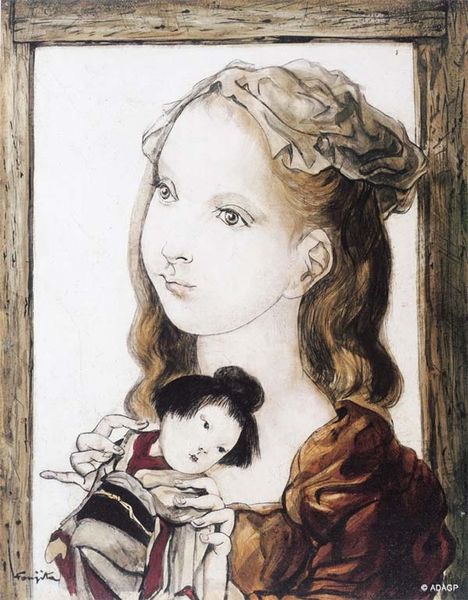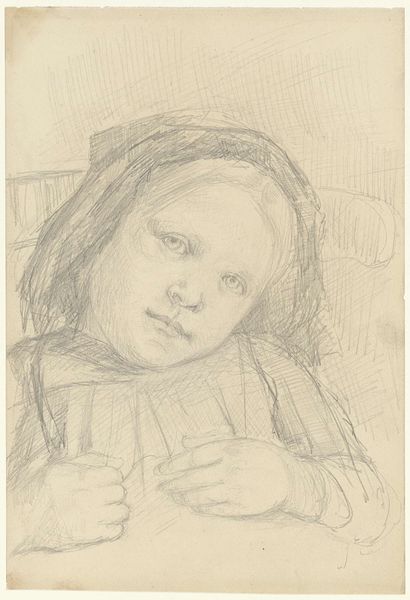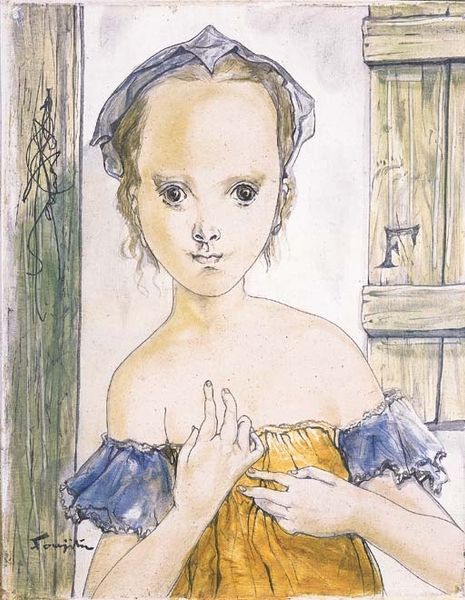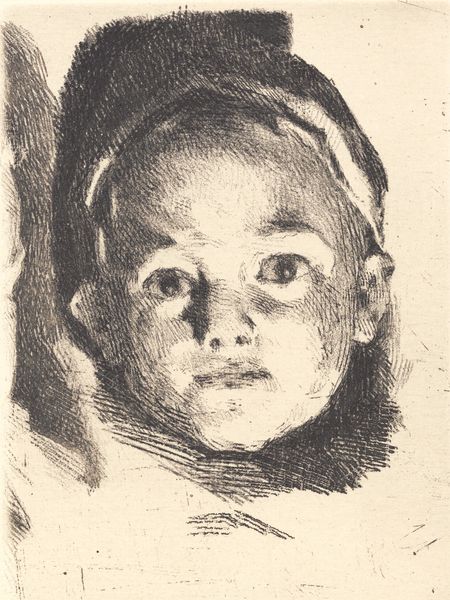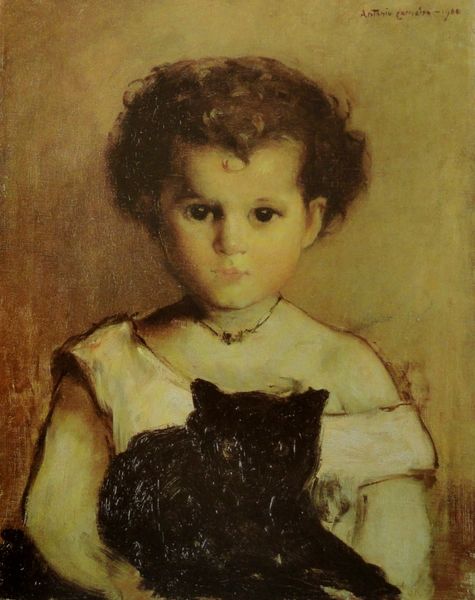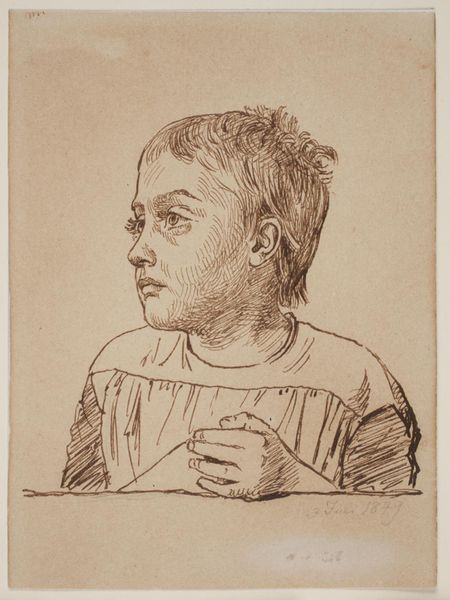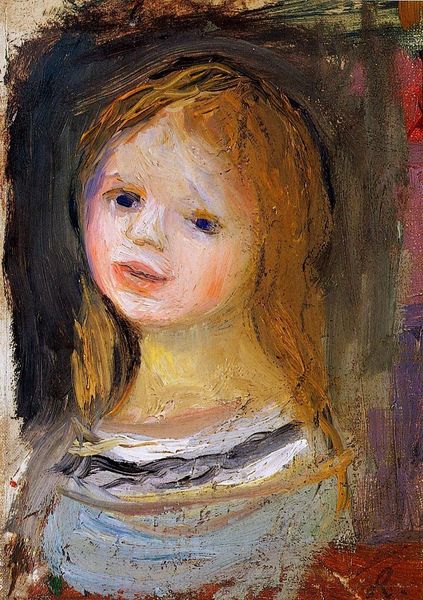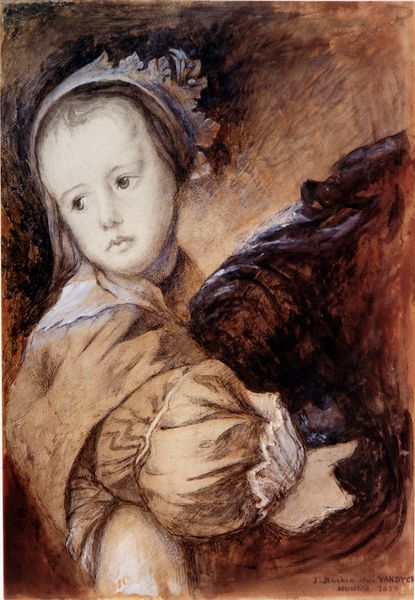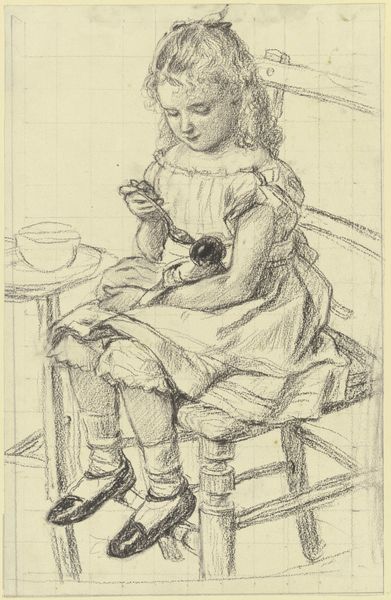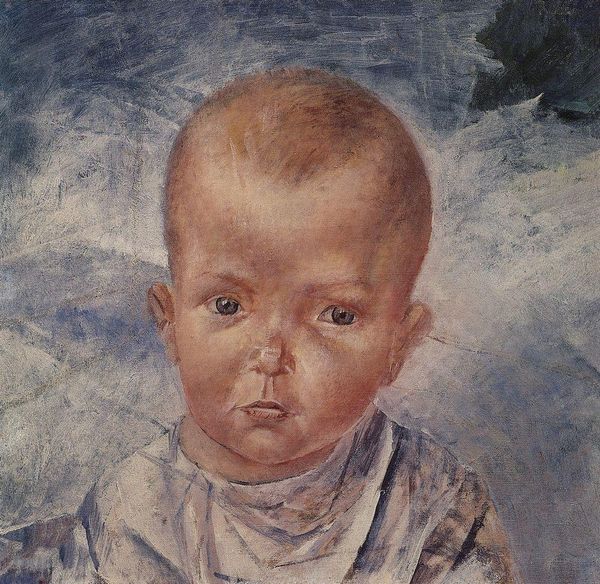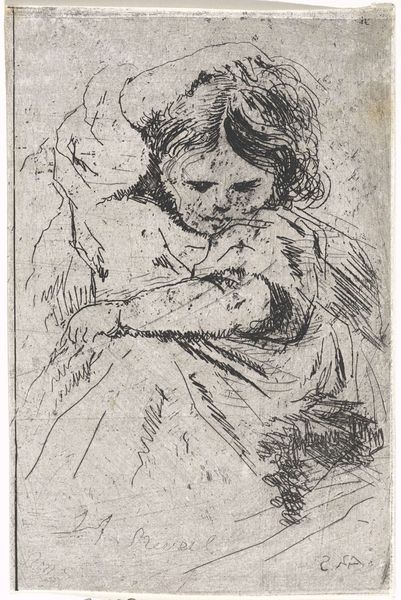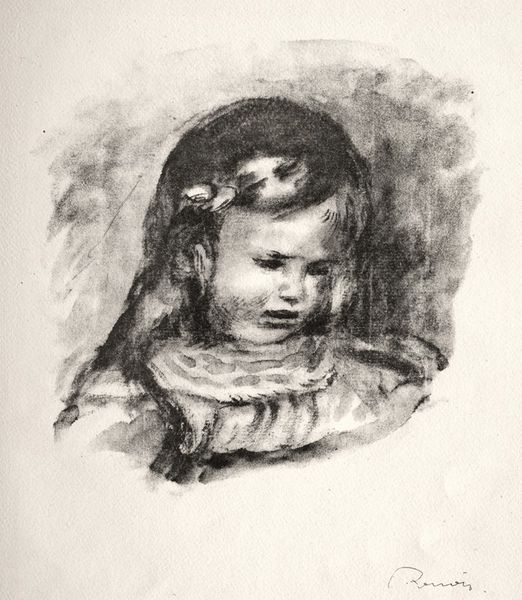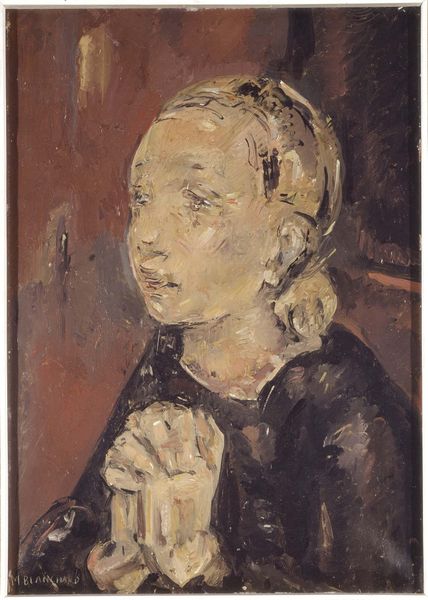
painting, watercolor
#
portrait
#
painting
#
figuration
#
charcoal art
#
watercolor
#
intimism
#
sketch
#
surrealism
#
portrait drawing
#
portrait art
#
modernism
Copyright: Tsuguharu Foujita,Fair Use
Curator: Foujita's "Jeune fille en jupe brune," painted in 1954, offers an intimate glimpse into girlhood, rendered in delicate watercolors and what appears to be charcoal. What are your initial thoughts? Editor: It's hauntingly beautiful, yet unsettling. There's a raw quality in the sketch-like execution that really draws attention to the materials. The brown ink is also noteworthy given how it almost makes the work resemble more of a very careful and elaborated piece of portrait art more than, say, oil paints would do. Curator: Exactly. Foujita’s focus on figuration through intimacy can be seen as his exploration of the Western gaze filtered through his own Japanese background, raising questions about representation, cultural appropriation, and exoticism inherent in portraying young girls in this specific way. What are your thoughts on its place within Modernism? Editor: Thinking materially, this work seems rooted in the tensions within Modernism itself – the machine-made world contrasted with the artist's hand. Look at the layers of color. There are clear signs that some corrections to the strokes were done while other were let go without changes. The combination hints at both skill and perhaps a conscious engagement with the readymade. How this affects perceptions of art and artmaking is an exciting possibility that modernism left for artists of his kind to pursue. Curator: That tension speaks directly to larger socio-political considerations during the time period in which Foujita was making this work, which might well imply a criticism on what has been deemed too sacred or too real by his time and culture, an interpretation supported by his intimate compositions as seen here. It begs us to consider who is empowered to depict these figures and for what purpose. Editor: Indeed. And it prompts questions about the commodification of art. What about the price of art and the economics around it? The girl’s neutral expression seems both to reflect and refract back. Curator: Precisely. It challenges us to unpack our own assumptions and recognize the intersecting power dynamics that are always at play in these moments. Editor: Seeing it within that lens… really changes the way I'm seeing it right now. It almost creates the notion that the medium and how Foujita worked, created some meaning behind this as well. Thank you!
Comments
No comments
Be the first to comment and join the conversation on the ultimate creative platform.
